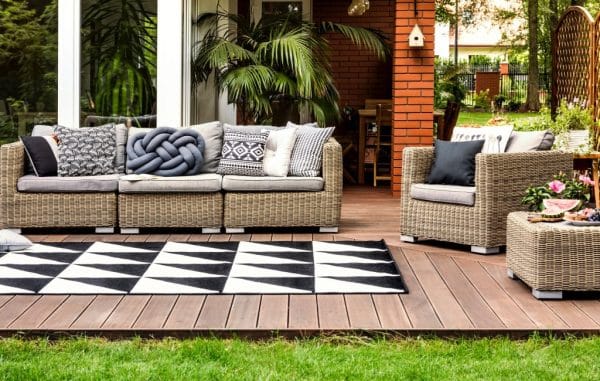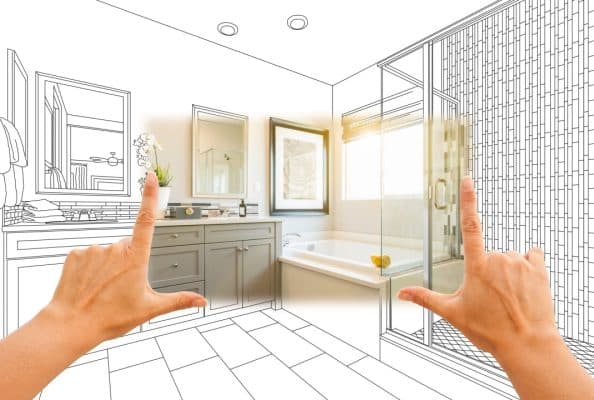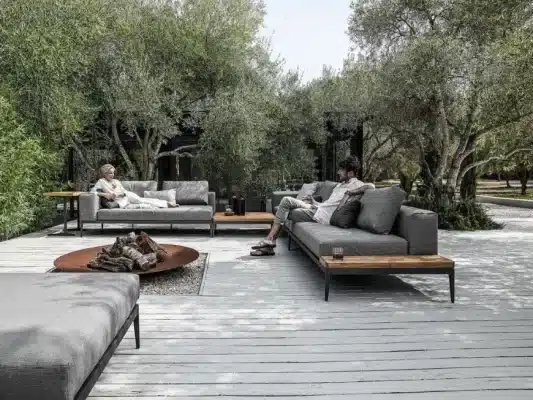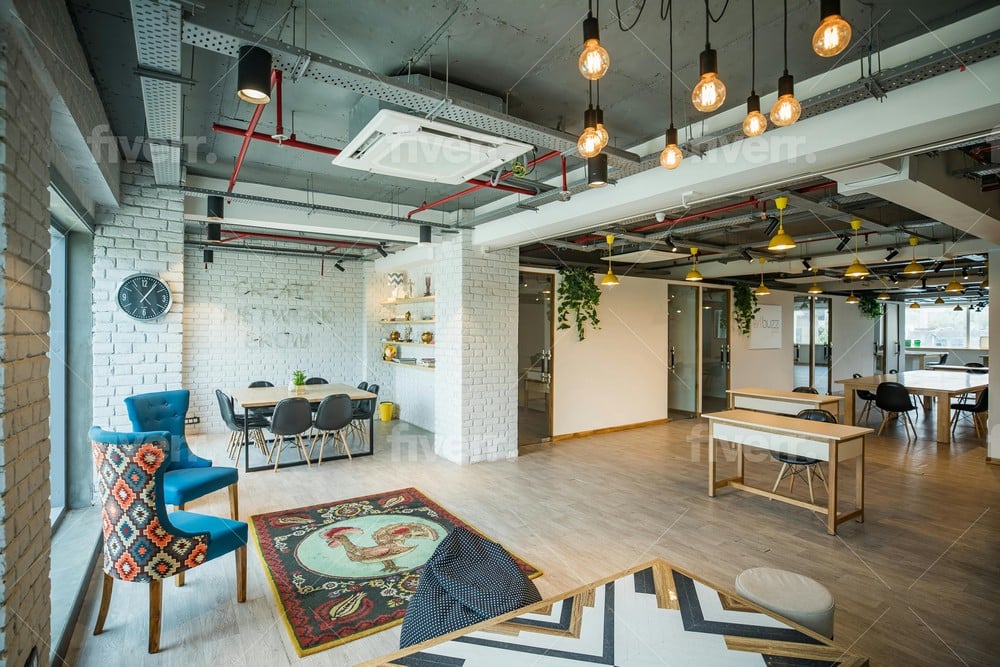
Do you like open living spaces having comparatively high ceilings, a machine-themed touch, and grungy texture? If yes! Industrial Interior design style is for you. Urban coolness, exposed bricks, and metallic accents give you warm feelings of the city skyline. It feels like a raw but elegant cityscape is right in your living room. Read on to learn about industrial interior design, origin, characteristics and more.
1. What Is Industrial Interior Design?
Industrial interior design is a style that incorporates the raw, utilitarian aesthetics of factories and warehouses. It embraces exposed materials such as brick and steel, complemented by a mix of rugged textures and sleek finishes. This interior design approach blends urban charm with functionality, inventing spaces that are both visually attractive and practical.
The hallmark of industrial design rests in its ability to seamlessly marry the rough-hewn with the polished, resulting in spaces that exude character and authenticity. Think spacious open layouts, utilitarian furnishings, and a palette that ranges from earthy tones to metallic accents. It’s about celebrating the imperfect, finding beauty in the unrefined, and creating an atmosphere that tells a story of urban evolution. Industrial interior design isn’t just a decor choice; it’s an artistic expression that invites you to step into a world where the industrial meets the artistic, and every element contributes to a narrative of modern, industrial allure. Welcome to the dynamic and visually arresting realm of industrial interior design.
2. Origins of Industrial design
The roots of industrial design can be traced back to the late 19th and early 20th centuries, a period marked by significant societal and technological changes. As the Industrial Revolution unfolded, traditional craftsmanship gave way to mass production, ushering in a new era that demanded a fresh approach to design. This shift in manufacturing processes, coupled with the surge in urbanization, spurred the need for functional, efficient, and aesthetically pleasing products and spaces.
The term “industrial design” itself gained prominence in the early 20th century, reflecting a conscious effort to integrate art and industry. Pioneering figures such as Peter Behrens, often regarded as the first industrial designer, played a crucial role during this time. Behrens, a German architect and designer, collaborated with AEG (Allgemeine Elektricitäts-Gesellschaft), where he not only designed products but also influenced the overall visual identity of the company. His approach marked a departure from traditional craftsmanship, emphasizing the importance of designing for mass production without sacrificing aesthetic appeal.
The Bauhaus school, founded in 1919 in Germany, further contributed to the evolution of industrial design. Led by visionaries like Walter Gropius, the Bauhaus sought to bridge the gap between art and industry. It promoted a holistic design philosophy that embraced simplicity, functionality, and the use of modern materials. The principles established at the Bauhaus had a lasting impact on industrial design, influencing generations of designers and shaping the movement’s trajectory.
Post-World War II, industrial design experienced a global boom as economies recovered and consumerism flourished. Designers such as Charles and Ray Eames in the United States epitomized the mid-century modern aesthetic, creating iconic furniture that seamlessly blended form and function. Their innovative use of materials like molded plywood and fiberglass set a standard for the fusion of technology and design.
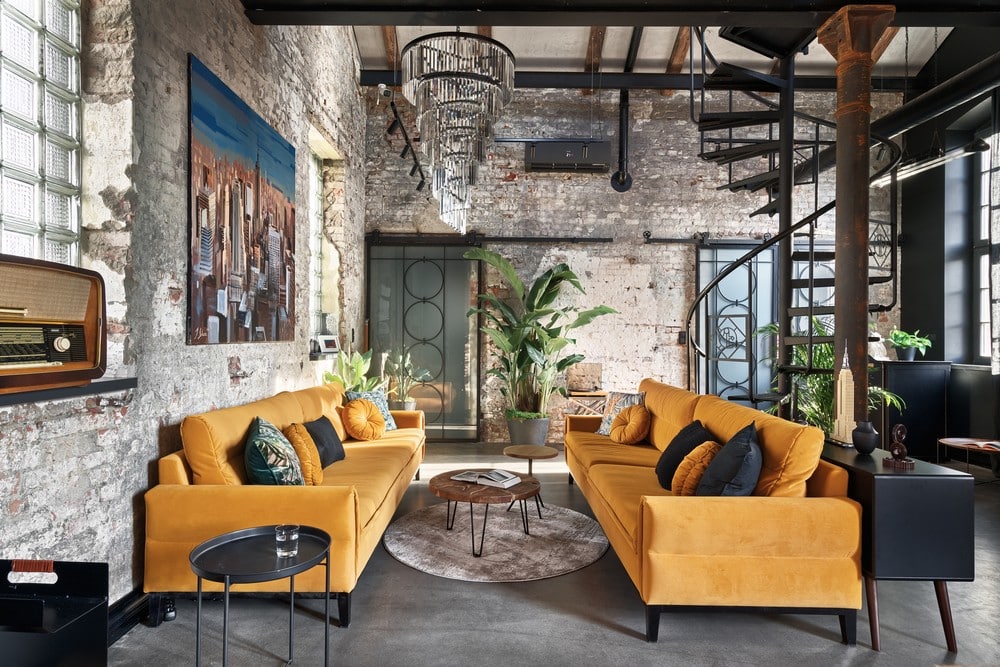
3. Characteristics of Industrial Interior Design
Industrial interior design boasts a distinctive set of characteristics that breathe life into spaces, transforming them into captivating environments that seamlessly blend the raw with the refined.
Raw Materials and Exposed Structures:
One of the hallmark features of industrial interior design is the unabashed celebration of raw, unadorned materials. Think exposed brick walls, weathered wood, and steel beams proudly showcasing their imperfections. Rather than concealing the bones of a space, industrial design revels in the authenticity of structural elements, turning them into focal points that tell a story of industrial heritage.
Neutral Color Palette:
A subdued and neutral color palette is the canvas upon which the industrial design masterpiece unfolds. Grays, blacks, browns, and whites dominate the color scheme, creating a harmonious backdrop that allows the textures and materials to take center stage. This minimalist approach not only emphasizes simplicity but also contributes to the timeless and versatile nature of industrial interiors.
Open and Airy Spaces:
Industrial design embraces the concept of open floor plans, creating spacious and airy environments. This characteristic draws inspiration from the vast, open layouts of factories and warehouses, allowing for fluid movement within a space. The absence of unnecessary partitions fosters a sense of freedom and flexibility, contributing to the overall functionality and adaptability of the design.
Utilitarian Furniture:
Furniture in industrial interiors follows a utilitarian aesthetic, often characterized by sturdy, no-nonsense pieces. Metal and reclaimed wood take center stage, embodying the durability and functionality required in an industrial setting. Uncomplicated designs and clean lines define industrial furniture, reflecting the essence of efficiency without sacrificing style.
Statement Lighting:
Lighting serves as a crucial design element in industrial interiors, not just for functionality but also as a means of making bold statements. Oversized pendant lights with exposed bulbs, vintage fixtures, and industrial-style lamps are common choices. These fixtures not only illuminate the space but also add a touch of drama and visual interest, becoming integral components of the overall design.
Vintage and Repurposed Finds:
Industrial interior design often incorporates vintage and repurposed elements, adding character and uniqueness to the space. Salvaged factory equipment, old signage, and antique furnishings contribute to the eclectic charm of industrial interiors. These pieces not only tell a story of the past but also serve as reminders of the design style’s roots in repurposing and reinventing.
Industrial Art and Decor:
Art in industrial interiors often mirrors the gritty, urban aesthetic of the design style. Industrial-themed artwork, graffiti-style murals, and bold graphic prints contribute to the edgy and contemporary feel of the space. These elements infuse personality and creativity into industrial interiors, making each space a canvas for artistic expression.
In essence, the characteristics of industrial interior design coalesce to create spaces that are not only visually striking but also narrate a tale of industrial evolution. It’s a harmonious blend of history and modernity, ruggedness and sophistication, resulting in environments that are as functional as they are aesthetically compelling. Whether in a trendy loft apartment or a converted warehouse workspace, industrial interior design remains a timeless and captivating expression of urban living.

4. Industrial Interior Design Ideas
Whether you’re revamping your living space or transforming a commercial environment, following industrial interior design ideas can serve as a guiding light to infuse your surroundings with the distinctive urban allure.
Incorporate Exposed Brick Accent Walls:
Create a captivating focal point by incorporating exposed brick accent walls. The warm, textured appeal of brick provides a perfect backdrop for industrial design, adding character and a touch of history to any space. Whether it’s in a living room, bedroom, or workspace, exposed brick instantly infuses a sense of urban charm.
Use Steel-framed Windows and Doors:
Channeling an industrial loft vibe, steel-framed windows and doors are a brilliant addition. Their sleek lines and minimalist aesthetic not only maximize natural light but also lend an authentic industrial touch. The contrast between the sturdy steel frames and the surrounding elements creates a visually dynamic atmosphere.
Industrial Lighting Fixtures:
Make a statement with industrial lighting fixtures that echo the design’s utilitarian roots. Oversized pendant lights, metal chandeliers, and exposed bulb fixtures add a touch of drama and authenticity. Hang them above kitchen islands, dining tables, or in entryways to illuminate the space with industrial flair.
Incorporate Reclaimed Wood Elements:
Integrate the warmth of reclaimed wood to soften the industrial edges. From rustic wooden furniture to reclaimed wood accent walls, this element introduces a natural, organic feel. The combination of weathered wood with industrial materials creates a harmonious blend, adding depth and character to the space.
Feature Your House with Concrete Floors:
Embrace the industrial aesthetic with polished concrete floors. Not only do they provide a sleek and modern look, but they are also durable and easy to maintain. Pair them with rugs or carpets in neutral tones to balance the coolness of the concrete and introduce an element of comfort.
Use Vintage Industrial Furniture:
Scour antique shops or repurpose old factory pieces to bring vintage industrial furniture into your design. Think metal filing cabinets, sturdy workbenches, and industrial carts repurposed as coffee tables. These pieces not only tell a story but also contribute to the authenticity of industrial interiors.
Keep it simple with Minimalist Color Palette with Pops of Metal:
Stick to a neutral color palette dominated by grays, blacks, and browns to maintain the minimalist appeal of industrial design. Introduce pops of metal accents, such as copper, bronze, or iron, to add visual interest. These metallic elements act as focal points, breaking the monotony and enhancing the overall aesthetic.
Opt for Open Shelving and Storage:
Opt for open shelving and storage solutions to showcase your industrial design sensibilities. Metal-framed shelving units with reclaimed wood shelves provide both functionality and visual appeal. Display books, decorative items, or kitchenware on these open shelves to infuse the space with personality.
Industrial Artwork and Decor:
Embrace industrial-themed artwork and decor to personalize your space. Large-scale canvas prints featuring urban landscapes, graffiti-style murals, or industrial-inspired sculptures add an artistic touch. These elements contribute to the edgy and contemporary vibe of industrial interiors.
Statement Wall Murals:
Go beyond traditional paint and wallpaper by incorporating statement wall murals. Choose designs inspired by urban landscapes, industrial machinery, or abstract geometric patterns. Murals not only add visual interest but also serve as a unique expression of your industrial design vision.
Conclusion
Using industrial design characteristics and ideas you can effectively convert your home into industrially inspired living space. You will need to us exposed brinks, beams, steal works, high ceilings, minimal paints and industrial furniture in your living room, kitchen, and bedrooms.


